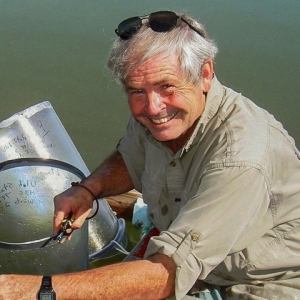Watershed Sciences Department
Utah State University
Bio:
Dr. Wayne Wurtsbaugh is an emeritus professor in the Watershed Sciences Department and the Ecology Center at Utah State University. His research and teaching interests are in the areas of limnology, water pollution and fisheries. Dr. Wurtsbaugh has a B.S. in Fisheries from the University of California, Davis (UCD), an M.S. in Fisheries and Water Quality from Oregon State University, and a Ph.D. in Ecology from UCD. He has 52 years of experience in research and teaching in the field of aquatic ecology. He has worked internationally on three continents utilizing environmental monitoring, large-scale field experiments, and laboratory assays to address both basic and applied research questions. This work has included studies on saline lakes larger than Great Salt Lake—Lake Urmia in Iran and Mar Chiquita in Argentina. He has been working on Great Salt Lake for 36 years, covering the period the Lake went from a historic high in 1987, to its record low in 2021. His research has covered analyses of brine shrimp, brine flies, eutrophication, metal contaminants, and the Lake’s hydrology. He has published 18 papers on Great Salt Lake and a total of 105 in scientific journals and books, as well as authoring numerous reports to state and federal agencies concerned with Great Salt Lake.
Title: The effects of salinity on plankton and benthic communities in the different bays of Great Salt Lake
Abstract: Authors: Wayne Wurtsbaugh and Brian Barnes. The salinities in the four major bays of Great Salt Lake vary greatly, and within the Farmington Bay and Bear River “estuaries” there are strong salinity gradients varying from freshwater to hypersaline conditions. Field studies along these salinity gradients demonstrate how the phytoplankton, zooplankton, and bottom-dwelling organisms change. Fish are present in the freshest areas and their predation influences the survival of other organisms such as brine shrimp. The toxic cyanobacteria, Nodularia, also changes along the gradient, with highest abundance and toxin levels when salinity ranges from 1-5 g/L. To help understand some of the changes, we conducted a microcosm experiment in 5-gallon buckets using organisms from Great Salt Lake to determine how salinities ranging from 10-275 g/L influenced the ecosystem. After 30 days, brine shrimp were nearly absent in salinities of 10 g/L (where fish survived) and greater than 225 g/L. Other zooplankton dominated the communities at salinities less than 50 g/L. Brine fly biomass decreased 45% as salinity increased from 50 to 250 g/L, indicative of the stress salinity places on the organisms. When brine shrimp and other grazers were abundant, phytoplankton chlorophyll levels were low, but when grazing rates declined at higher salinities, phytoplankton chlorophyll increased markedly. Mean periphyton chlorophyll levels on the sides of the buckets showed the reverse pattern. Denitrification decreased total N concentrations during the experiment, yielding concentrations indicative of nitrogen limitation of the phytoplankton. The field sampling and microcosm experiment demonstrated the strong influence of salinity on the entire ecosystem and highlighted the need for careful management of this parameter in Great Salt Lake and elsewhere.

